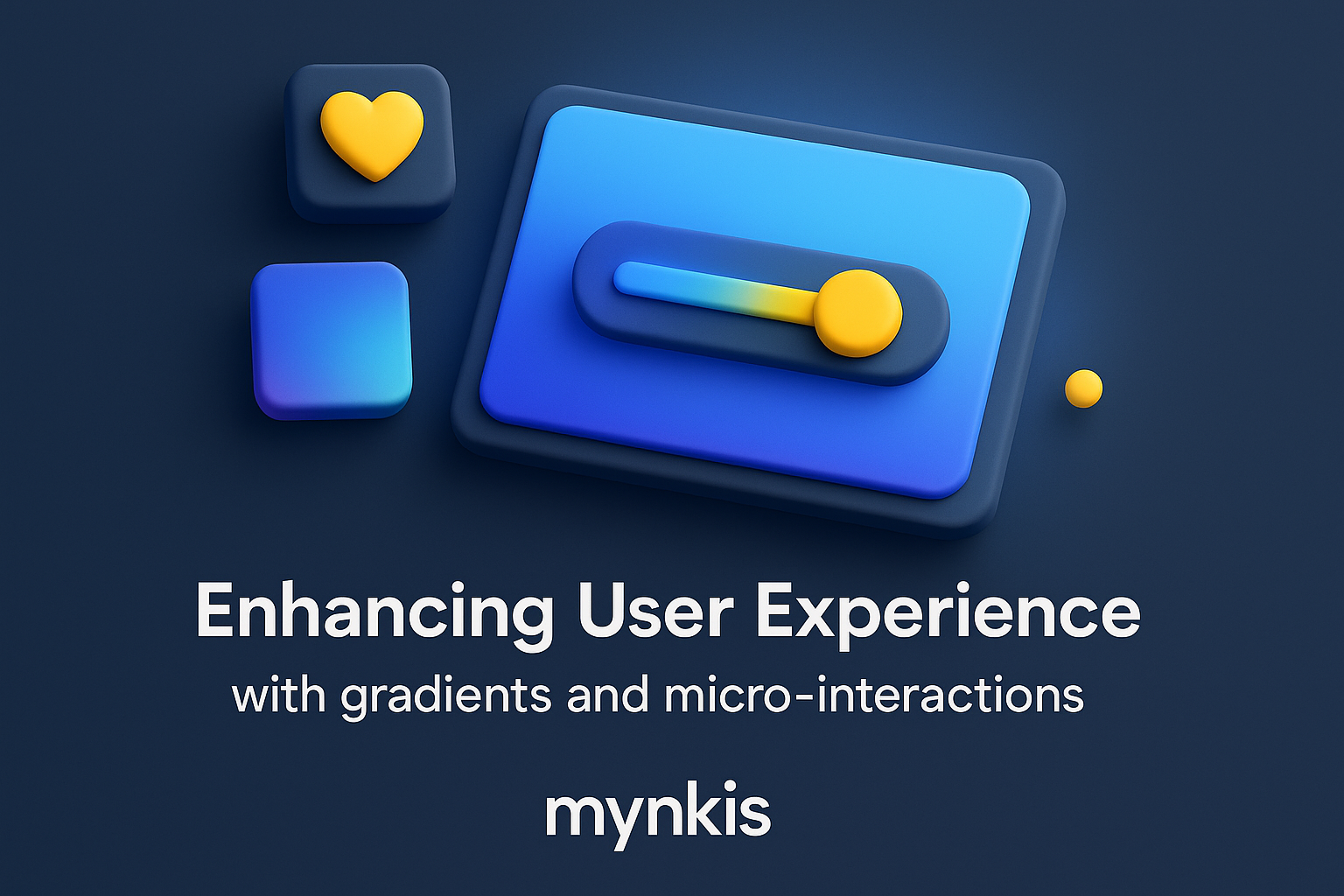Schedule a Demo
Gradients aren't just a revival; they're a staple in modern web design that can enhance user experience in surprising ways. I often find myself advocating for subtle gradient backgrounds that create depth and life without overwhelming the user. These nuanced design choices can significantly impact how your audience perceives and interacts with your website, making their experience more dynamic and engaging.
The strategic use of gradients is particularly valuable in custom enterprise software solutions, where creating a seamless and aesthetically pleasing interface for internal tools or customer portals is crucial. By integrating gradients into elements like buttons, headers, and backgrounds, you're not only modernizing your design but also guiding the user's eye through the website with greater finesse. In large organizations where multiple teams interact with different software platforms daily, a well-implemented gradient design can enhance usability and retention of the interface.
Micro-interactions are the unsung heroes of user experience. Every time a user interacts with a like button, a toggle, or even sees a loading animation, they're engaging with a micro-interaction. From personal experience, I've observed that these tiny moments of feedback can transform a static webpage into an engaging, real-time platform that feels responsive to the user's actions.
For example, in high-performance websites developed for large organizations, micro-interactions can provide critical feedback about actions completed successfully. Imagine an employee using an internal tool where every click, every save, and every data entry point provides just the right amount of visual feedback. This doesn't just improve usability; it contributes to a positive emotional response to the software. According to research from the Nielsen Norman Group, effective feedback can reduce user frustration and increase overall satisfaction.
When you merge the aesthetic allure of gradient design with the functional benefits of micro-interactions, you're crafting a holistic user experience that stands out. It's not just about looking good; it's about creating a site where users feel a connection to what they're doing. The right gradient can soften transitions, guide the eye naturally across the page, while micro-interactions ensure users feel in control and rewarded for their engagement.
I've had success using subtle gradient transitions on hover states and buttons, paired with micro-interactions like ripple effects or subtle color shifts to signal interactivity. This not only spices up the visual design but enhances the functional aspects of custom software solutions. For businesses in the S&P 500, ensuring employees feel a seamless connection to their tools via pleasing visuals and responsive interactions directly contributes to increased productivity and efficiency.
One compelling aspect of micro-interactions in enterprise software is their ability to teach users through doing. Consider onboarding a new employee onto a complex internal tool; every action taken can be met with a tailored micro-interaction, signaling success or the need for more information. This learning-through-interaction process reduces the learning curve significantly, based on available research on how micro-interactions can enhance learning and retention.
Some organizations overlook the potential of micro-interactions due to their size, mistakenly believing they add little value. Yet, in my work with operations managers, I've seen how a thoughtfully designed checkmark on a completed action, or a brief animation of data syncing, not only pleases visually but boosts user morale and satisfaction. Individual results may vary, but the overall trend is that users value these meticulous touches in their daily software usage.
The palette of gradients goes beyond mere aesthetic appeal. They can embody brand personalities, especially for custom software portals. A well-chosen gradient transition from cool to warm colors can suggest reliability and sophistication, key attributes that enterprise clients value. Gradients can be particularly impactful in customer-facing portals where establishing a brand identity is vital.
I've seen organizations leverage gradients to visually distinguish different sections of their website or software application, increasing navigational ease for users. A high-performance website with contrasting gradient backgrounds for different sections, for instance, can eliminate visual monotony and facilitate quick comprehension of content zones, which is particularly helpful in complex data dashboards.
To illustrate, a company I worked with recently redesigned their customer portal, integrating gradient overlays with micro-interactions to revamp user flow. The gradients were utilized to improve readability and aesthetics across different display devices, while the micro-interactions provided nuanced feedback that made users feel more connected to the service.
Post-redesign, data showed an increase in user session duration and a decrease in customer support queries, suggesting improved user satisfaction and engagement. This case exemplifies how thoughtful design elements are more than just decorations; they're strategic enhancements to the user experience that can directly influence operational efficiency in large organizations.
The future of website and software design hinges on the continued interplay of aesthetics and functionality. As trends evolve, gradients and micro-interactions will likely become even more sophisticated, driven by advances in technology and a deeper understanding of user psychology. For now, embracing these elements in custom software solutions and high-performance websites remains a forward-thinking approach that aligns with modern user expectations.
Reflecting on all that, it's clear we must balance bold creativity with pragmatic design to cater to the complex needs of large organizations. Gradients and micro-interactions may seem like small pieces of the puzzle, but they contribute profoundly to the overarching user experience, painting a holistic picture of what engaging digital solutions can achieve.
Engagement isn't just about holding attention; it's about creating a seamless connection between users and their digital environments. By infusing enterprise software solutions with the gentle vibrancy of gradients and the subtle response of micro-interactions, businesses can enhance efficiency, productivity, and—perhaps most importantly—user satisfaction.
